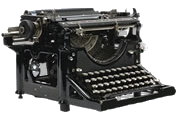The Spirit of the War at Eton (Cornhill Magazine, 1918)
Published during the closing months of the war, the following five page article is a beautifully written account, by an Old Etonian illustrating the strange atmosphere felt on the Eton campus as a result of the Great War with all it’s sadness and uncertainty.
Click here if you would like to read a magazine article about World War I as it was experienced on the Harrow campus.
The Spirit of the War at Eton (Cornhill Magazine, 1918) Read More »
